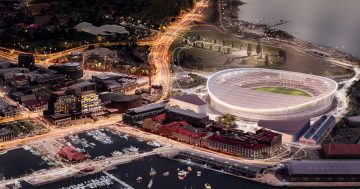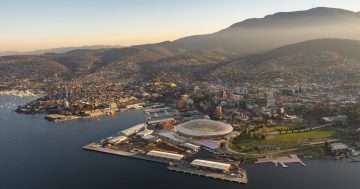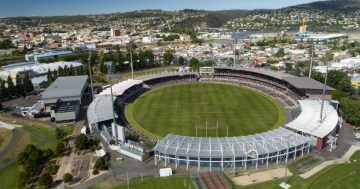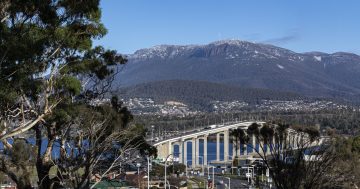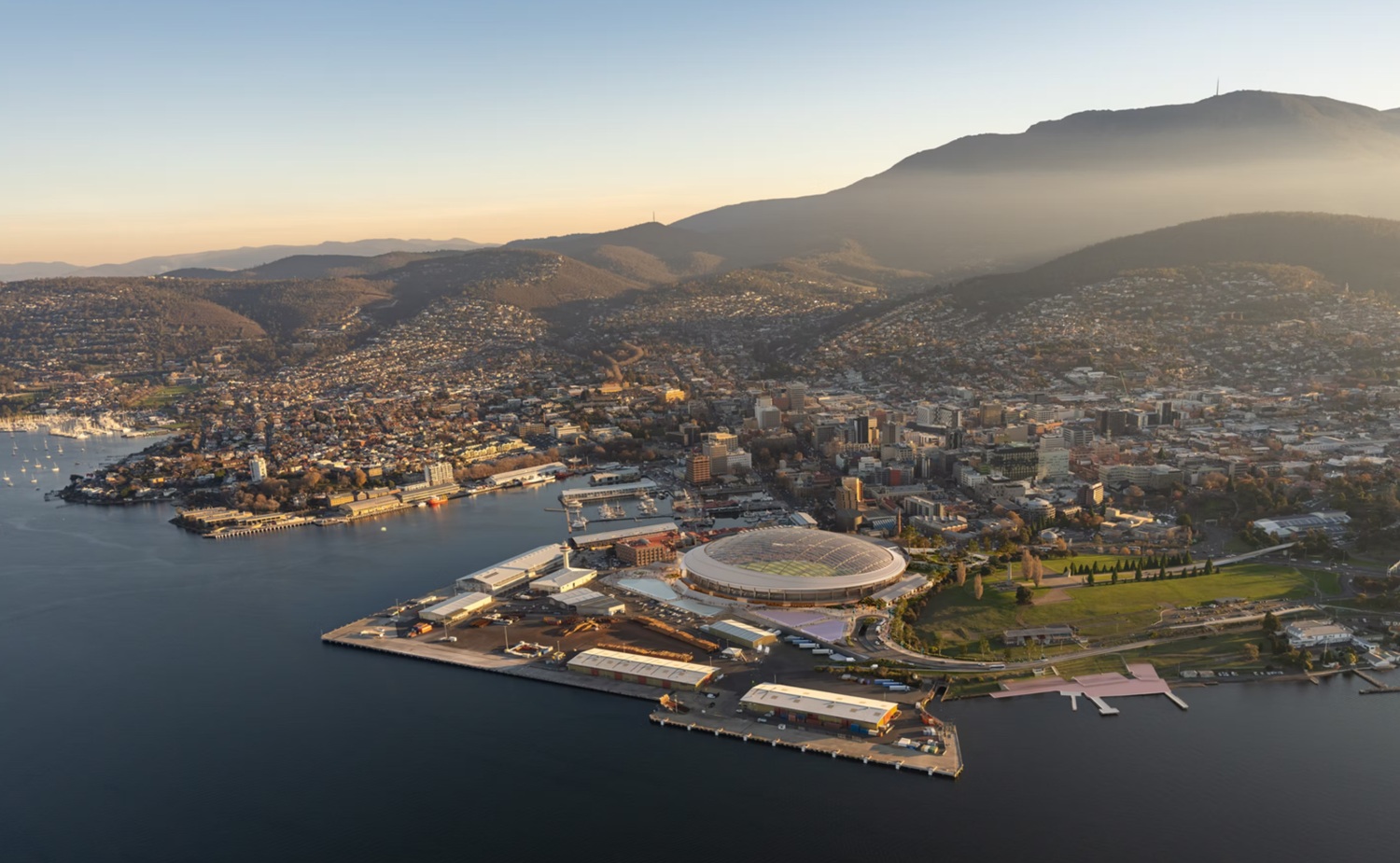
The Tasmanian Government estimates the stadium will cost $775m. Image: Macquarie Point Development Corporation.
The Tasmanian Government has claimed a scathing report into the proposed Macquarie Point Stadium in Hobart underplays the potential benefits of the development.
The draft report by a Tasmanian Planning Commission (TPC) panel was released on 31 March. It says the project is already displaying the hallmarks of mismanagement, and describes the proposed stadium as overbearing, disproportionate, and that it goes against local planning schemes.
It also claims the proposal has severe economic implications for the community, that it has insufficient transport planning attached to it, and is likely to cost nearly $1.2 billion to build – far in excess of the government’s estimate of $775 million.
On the economic benefits, the government’s claim of a cost-benefit of 69 cents for every dollar spent far exceeds the TPC’s estimate of 53 cents, and the report also raises concerns about the level of borrowing that will be required.
“Under its central scenario, construction of the project would require the state to borrow – or otherwise finance at the same or greater cost – approximately $992 million,” it reads.
“At the end of 10 years of operation the additional debt directly associated with the project’s construction and operation would be approximately $1.86 billion”, a figure the TPC says may “trigger a credit rating downgrade” for Tasmania.
The government estimates the stadium will cost $775m.
The panel also questioned the government’s estimate that interstate visitors would comprise 25 per cent of the crowd at AFL games scheduled for the stadium, suggesting a more accurate figure would be about 15 per cent. This has obvious economic implications for any benefit the government was hoping to garner for local businesses in Hobart.
Regarding the stadium’s design, the report says the proposed design interacts poorly with its immediate surroundings and Hobart’s cityscape, that its height and bulk are incompatible with Hobart’s planning principles, and its scale would “exacerbate negative aspects of its form”.
“The panel considers the stadium’s form does not respect the natural layered land form of Hobart between Kunanyi/Mount Wellington and Timtumili Minanya/River Derwent, with the Cove as the centre of the amphitheatre,” it reads.
The TPC also said the design wasn’t conducive to hosting international cricket matches, after cricket authorities expressed concern to the government about the stadium’s roof.
Transport and pedestrian planning for the stadium also came in for criticism, with the TPC saying a lack of bus stops near the site would create long delays, and that bus access would be exacerbated by overcrowding.
“The footpath and waiting area adjacent to the eight event bus stops is likely to be overcrowded for the majority of the first hour for patrons leaving a 24,500-person event,” it reads. “For higher capacity events, crowding would be worse.”

Image: Macquarie Point Development Corporation.
In a statement, Tasmanian Planning Minister Eric Abetz said the report appeared to “underplay the immense benefits of the stadium and the precinct it will unlock”, but that the Macquarie Point Development Corporation would now work through the issues the report raised.
“The report has also raised broad issues and taken a wide scope of the project, and we are concerned about the potential of any delays to an already tight timeline,” he said.
“We have been clear, that if we are to meet the existing timeframes set out in the agreement, we cannot afford any delays.
“Ultimately, the decision on whether the project will proceed will be made by parliament,” he added.
“The Tasmanian Government will continue working towards the timelines for the development as we seek to revitalise Macquarie Point.
“We are 100 per cent focused on delivering this game-changing precinct, which will create thousands of jobs and economic activity for decades to come.”


